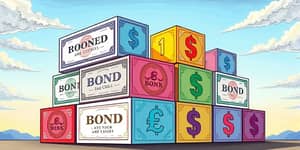In a world driven by industrial demand and agricultural output, investing in commodities offers a unique avenue for portfolio diversification and inflation protection. As 2025 unfolds, investors must navigate shifting supply chains, geopolitical dynamics, and technological shifts shaping raw materials markets.
Understanding Commodities: Definition and Scope
At their core, commodities are basic raw materials or primary agricultural products that underpin global trade and manufacturing. They include energy sources such as oil and natural gas, metals like gold and copper, staple crops such as wheat and corn, and soft commodities including coffee, cotton, and sugar.
These goods are traded on major exchanges worldwide. Their prices reflect complex interactions of supply and demand fundamentals, weather events, political developments, and macroeconomic trends. For investors, commodities represent both an inflation hedge and a means to capture cyclical growth opportunities.
- Energy: crude oil, natural gas, LNG
- Metals: precious and industrial
- Agricultural: grains and oilseeds
- Soft Commodities: coffee, cotton, sugar
- Emerging Categories: battery minerals
2025 Market Overview
The outlook for 2025 points to a continuation of the recent downturn in commodity prices. Industry forecasts suggest aggregate prices will decline by about 12%, extending a trend toward a six-year low. Early projections for 2026 indicate an additional 5% drop, driven by slowing global demand and persistent supply surpluses.
Volatility remains elevated, marking the highest commodity price volatility in at least 50 years. Price cycles from 2020 to 2024 were notably shorter, characterized by rapid surges followed by sharp corrections. Investors should prepare for continued whipsaw movements as markets adjust to economic growth fluctuations and policy interventions.
- Aggregate price decline: -12% in 2025
- Projected further drop: -5% in 2026
- Historically elevated volatility
- Shortened commodity cycles
Sector-Specific Highlights
Energy (Oil and Natural Gas)
The average Brent crude price is forecast at $73 per barrel, with the possibility of closing the year below $70. West Texas Intermediate may trade around $64. Slowing consumption growth, combined with surplus supply from major producers, underpins this softer outlook. OPEC+ production policies and geopolitical flashpoints in the Middle East and Eastern Europe will remain key volatility drivers.
Natural gas and LNG markets are seeing export-led expansion, particularly in Europe and Asia. Incremental pipeline and liquefaction capacity additions could push supply higher, creating downward pressure on spot prices despite rising industrial and power demand.
Metals
Gold peaked near $2,790 per ounce in 2024 as investors sought safe havens. Silver reached almost $35 per ounce. However, persistent dollar strength and easing inflation expectations may temper precious metal gains in late 2025. Industrial metals such as copper and nickel have held relatively stable, buoyed by demand for low-carbon technologies and infrastructure projects.
Agriculture
U.S. corn production is projected at 15.7 billion bushels, with a stocks-to-use ratio at a four-year low of 8.7%. Adverse weather patterns—driven by El Niño or La Niña—could tighten supplies and drive prices higher. Wheat and soybeans may experience similar pressure if global yield forecasts deteriorate.
Soft Commodities
Prices for sugar, cocoa, and coffee face headwinds from excess global inventories and favorable growing conditions in key producing regions. However, the sector remains vulnerable to global climate shifts, and localized disruptions could spark intermittent price spikes.
Drivers of Change
Several overarching forces will shape commodity markets in 2025:
- Slowing global economic growth: Lower industrial output reduces demand for energy and base metals.
- Geopolitical tensions: Sanctions, trade disputes, and election cycles inject risk and intermittent supply disruptions.
- Weather and climate volatility: El Niño/La Niña cycles and extreme events affect agricultural yields and energy infrastructure.
- Technology and decarbonization: Rapid advances in battery minerals and green energy shift demand toward lithium, cobalt, and nickel.
Investment Strategies and Risks
Professional traders emphasize the need for dynamic, hedging-rich strategies to navigate the anticipated downtrend. According to industry analysts, 59% of major commodities are expected to average lower prices in 2025, underscoring the importance of expert analysis and risk management.
Investors can access commodity exposure through futures and options contracts, exchange-traded funds, shares of producers and miners, and direct physical holdings. Each vehicle carries unique cost structures, margin requirements, and liquidity profiles. Understanding these nuances is essential for achieving desired risk-reward outcomes.
Key risk factors include a further global growth slowdown, persistent U.S. dollar strength—which makes dollar-denominated commodities more expensive—and the potential unwinding of OPEC+ production cuts. Conversely, geopolitical escalations, severe weather events, or unexpected supply shocks could spark short-term price surges.
Outlook and Forward-Looking Trends
The broad-based commodity index is likely to remain under pressure in 2025, driven by weakness in the energy sector but with pockets of resilience in natural gas and select agricultural markets. Falling commodity costs may ease inflationary pressures globally, offering respite to central banks and consumers.
Policy developments, including upcoming elections and evolving carbon regulations, will influence supply-side dynamics. Investors should monitor changes in export controls, permitting regimes, and subsidy frameworks, as these can alter the competitive landscape for raw material producers.
Key Data and Figures
Regional Perspectives
United States: Policy shifts on drilling permits, agricultural subsidies, and export regulations will directly affect domestic production costs and trade flows. Market participants are closely watching regulatory changes in carbon emissions standards and biofuel mandates.
China and Asia: Demand patterns for energy and metals in China continue to shape global pricing. Tariff negotiations and industrial stimulus measures play significant roles in determining import volumes and reserve drawdowns.
Europe: Aggressive decarbonization policies and the transition to renewable energy sources are redefining mining operations and refining capacities. Investors should assess regulatory risks and opportunities tied to carbon pricing and green infrastructure funding.
Expert Insights and Final Thoughts
Seasoned analysts anticipate that ESG and decarbonization trends will increasingly influence capital allocation in the metals and mining sector. Active management approaches, including selective hedging and tactical positioning, are preferred over passive benchmarks in the current environment.
While broad-based price declines may challenge buy-and-hold strategies, commodity markets still offer compelling opportunities for skilled investors ready to capitalize on short-term dislocations and long-term thematic shifts. By combining rigorous data analysis with a clear understanding of geopolitical and climate drivers, market participants can build resilient portfolios poised for the next commodity cycle.
References
- https://brainworksinc.com/commodities-market-experienced-traders-2025/
- https://openknowledge.worldbank.org/entities/publication/02d005ef-e3d9-44f5-aada-8ba42663a743
- https://globalmarkets.cib.bnpparibas/commodity-markets-energy-markets-2025/
- https://www.aberdeeninvestments.com/en-us/investor/insights-and-research/commodities-the-year-that-was-the-year-that-could-be-2025
- https://www.fastmarkets.com/insights/key-topics/2025-commodity-market-outlook/
- https://www.admis.com/commodities-overview-july-2025-edition/
- https://www.morganstanley.com/im/en-gb/intermediary-investor/insights/articles/commodity-outlook-2025-three-areas-to-watch.html










